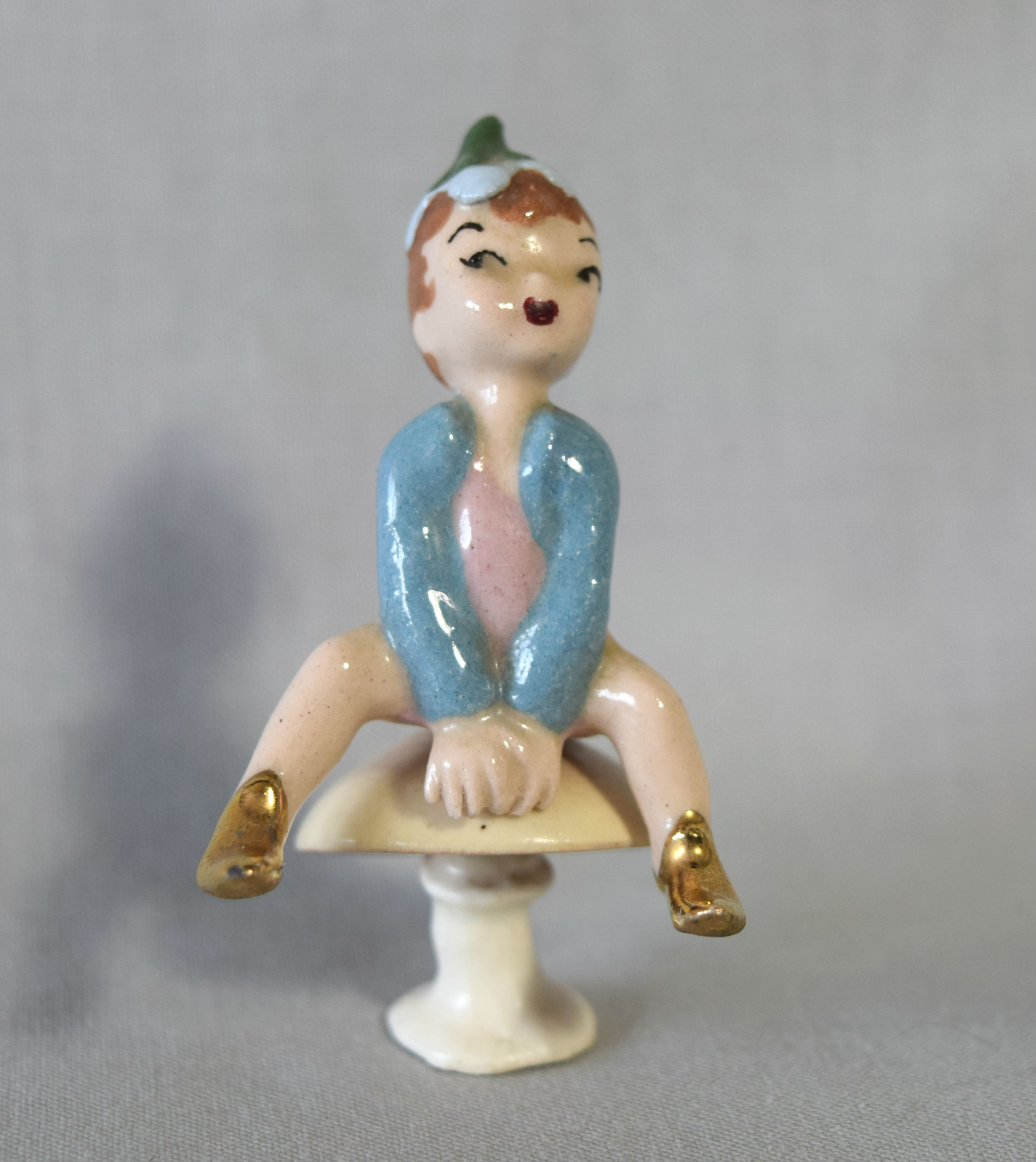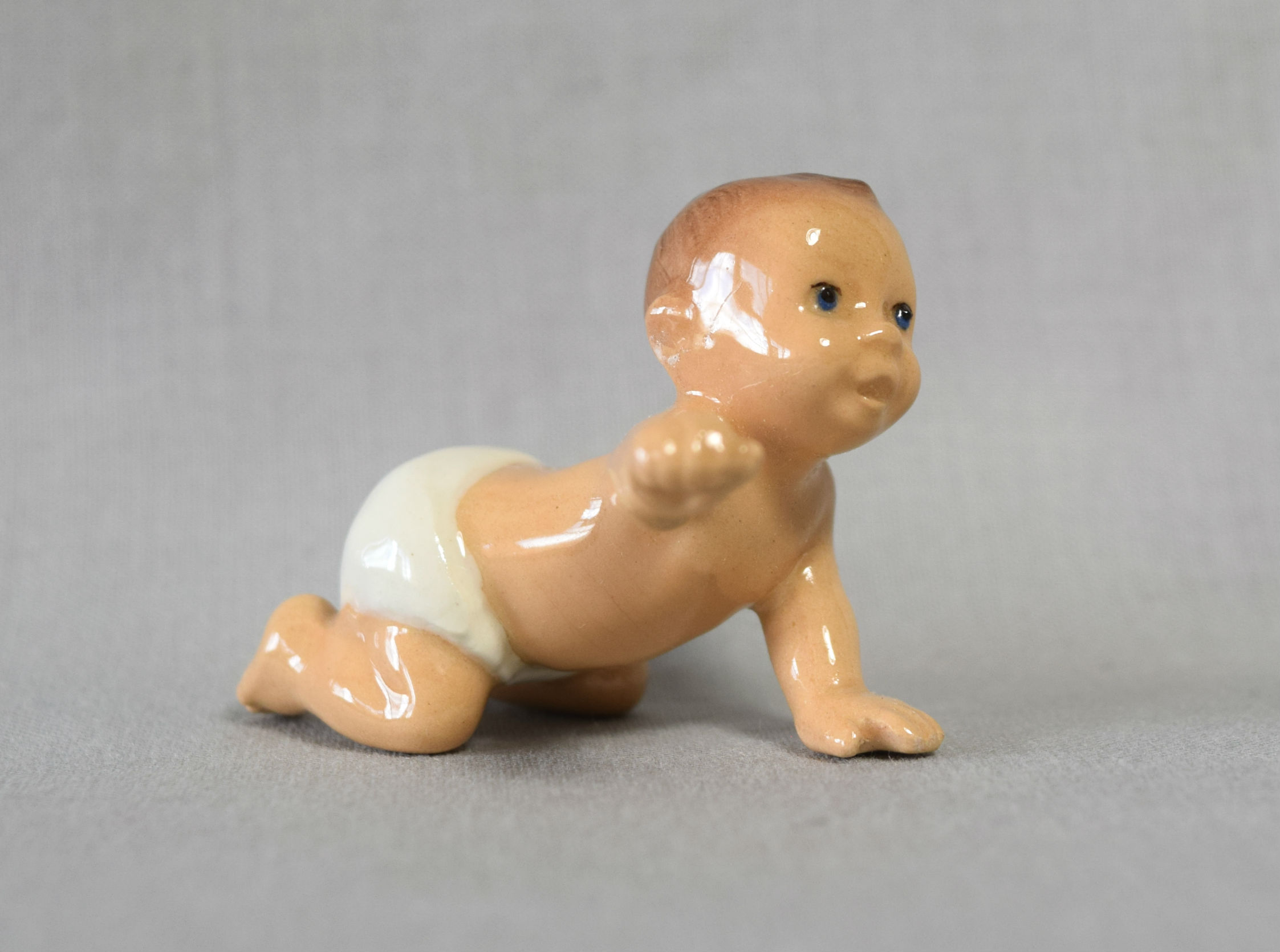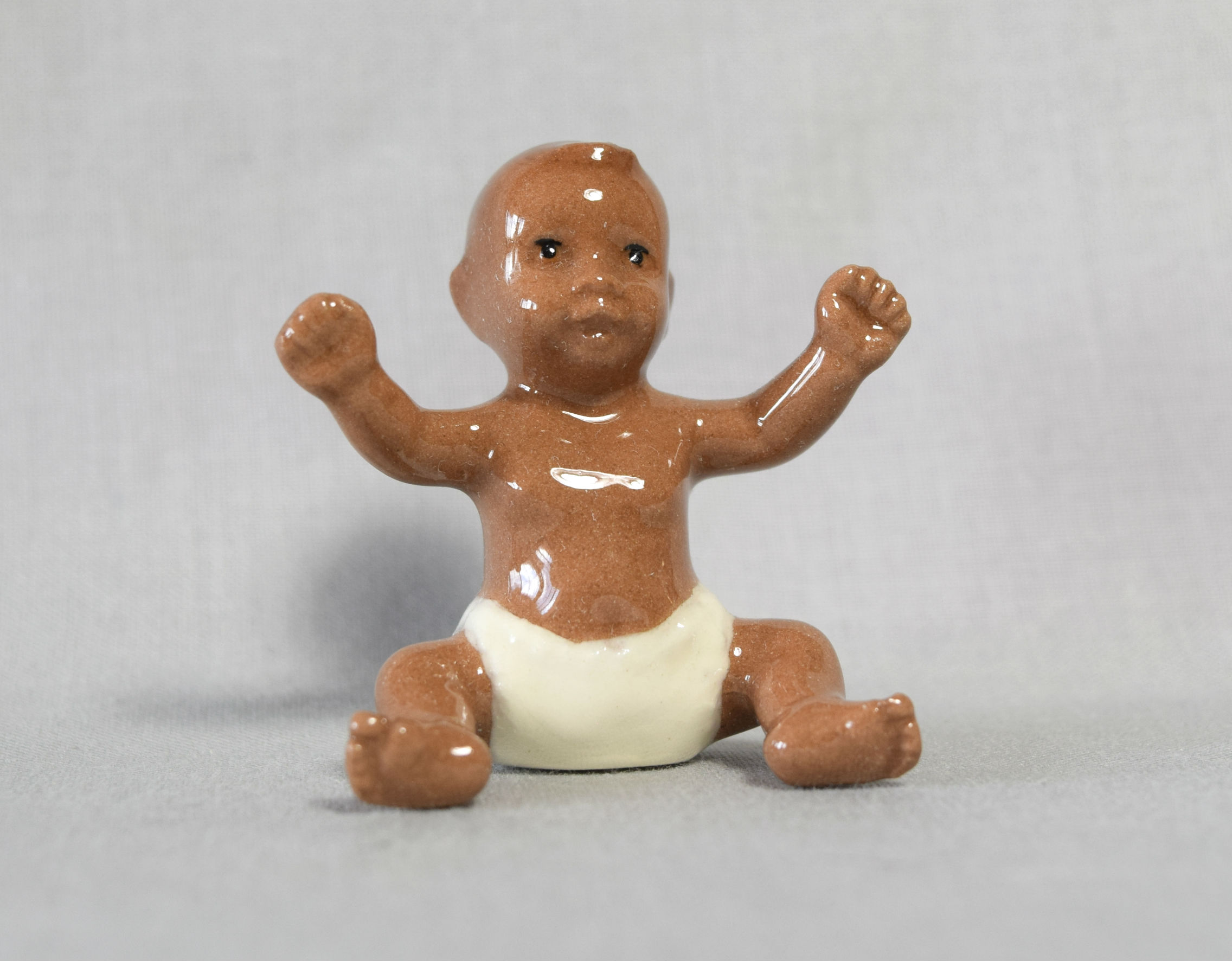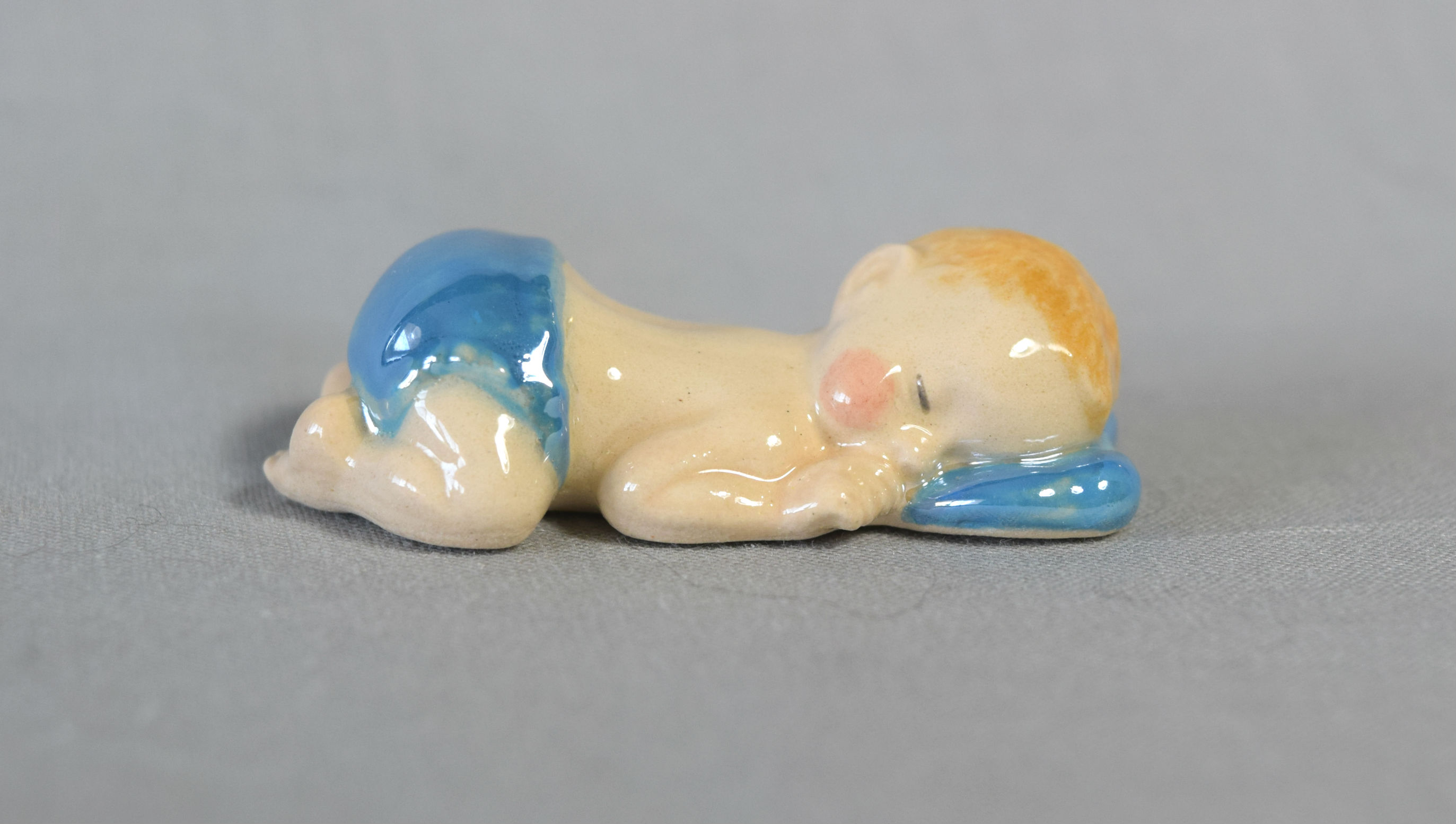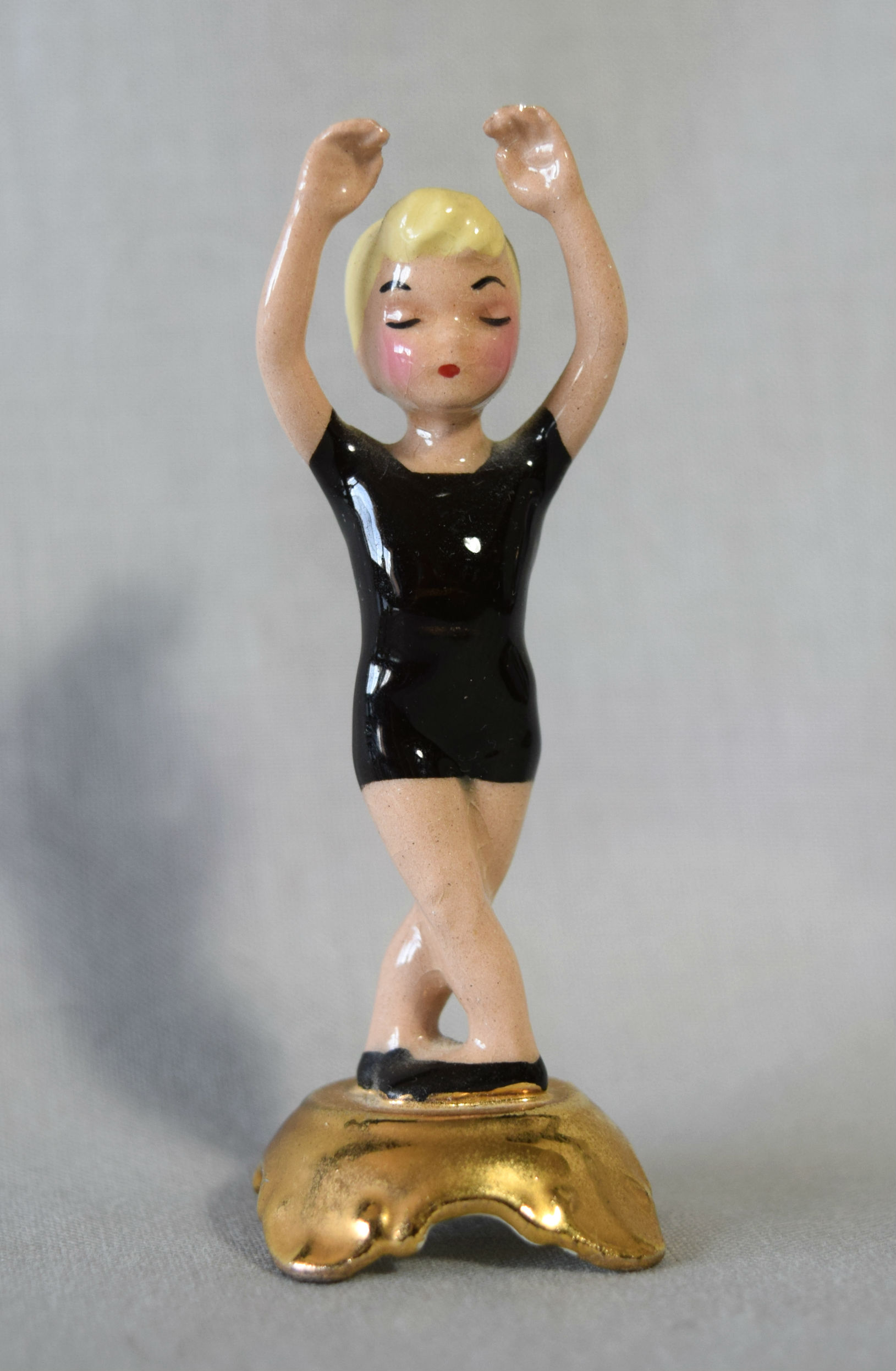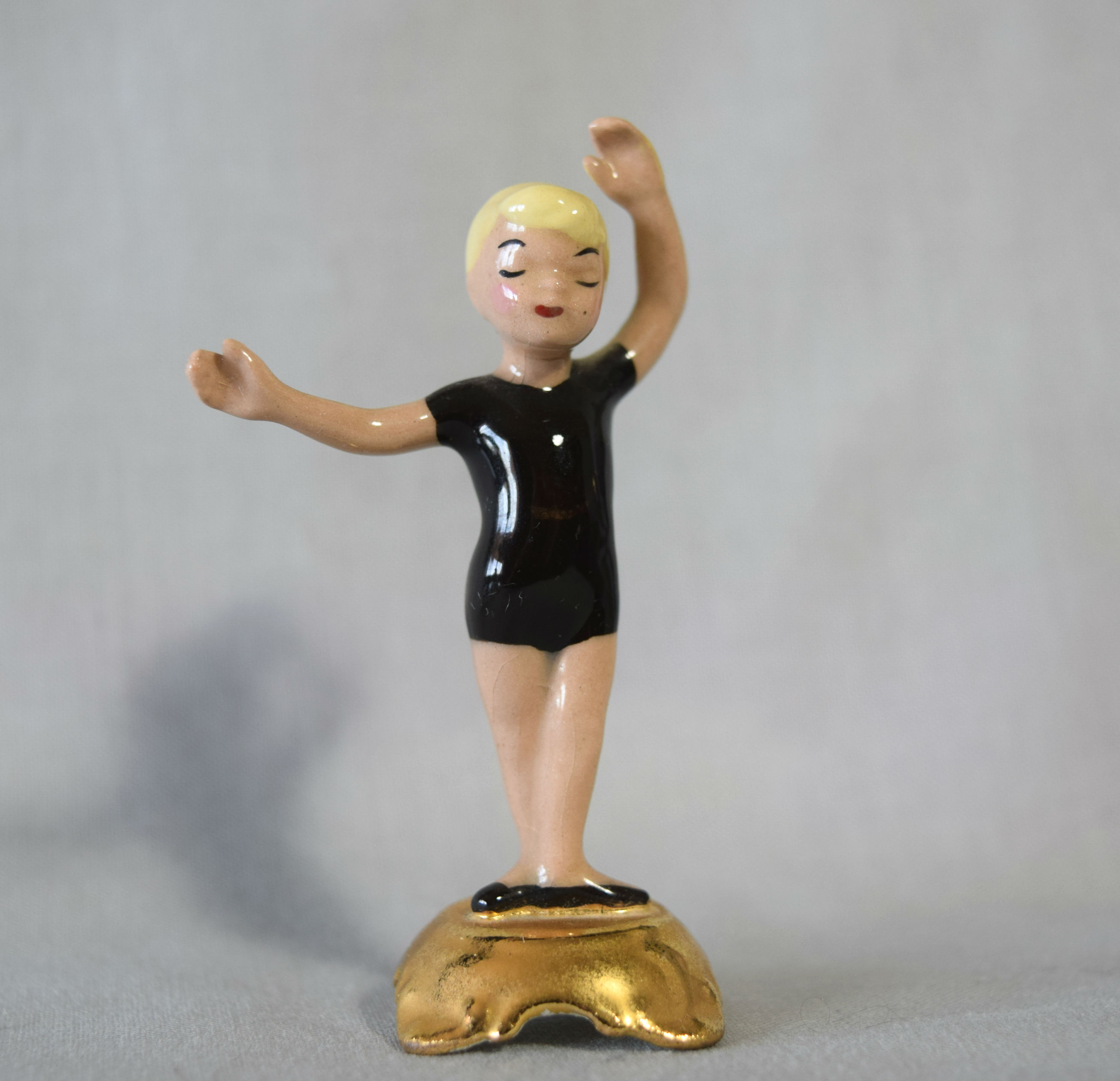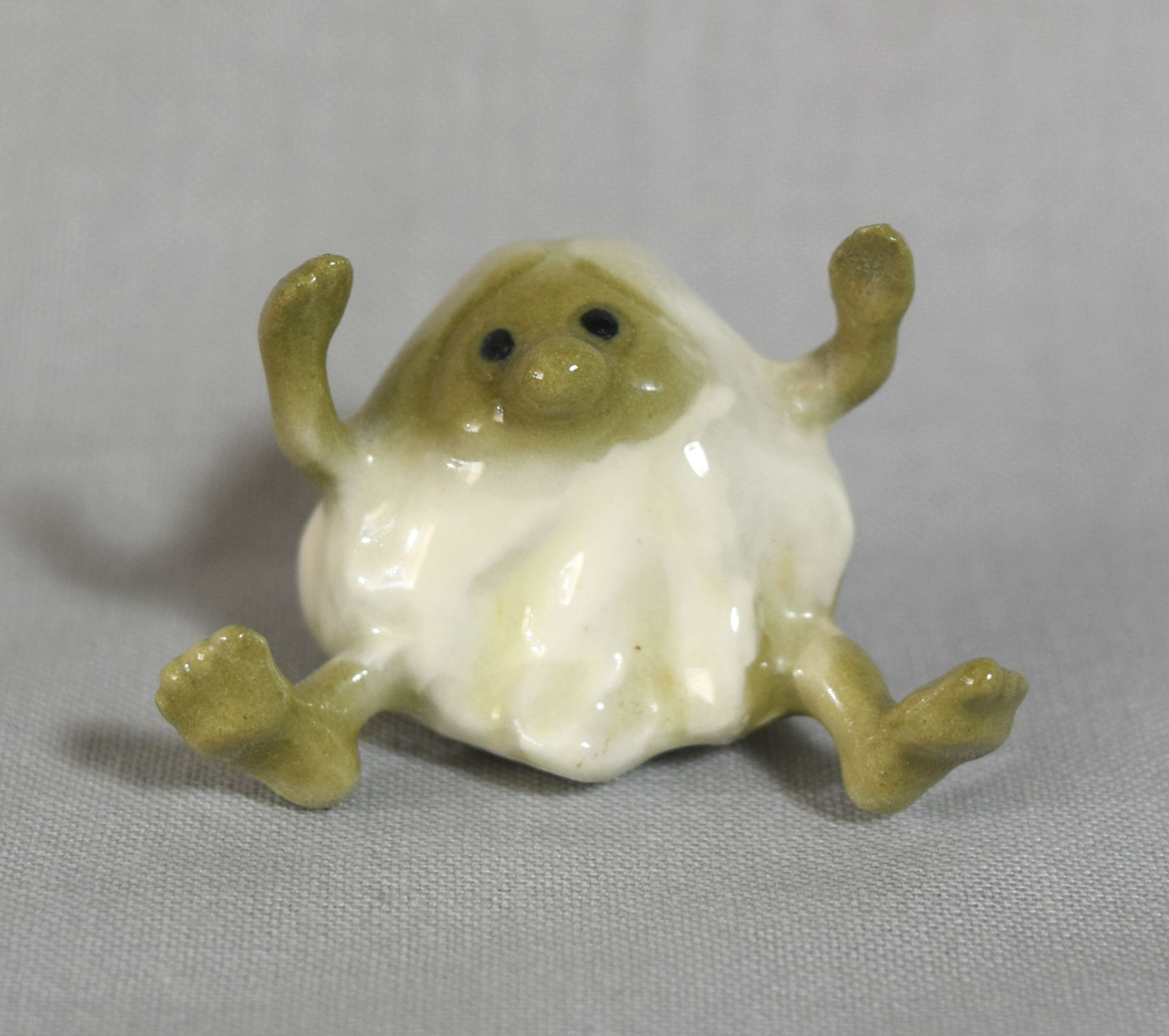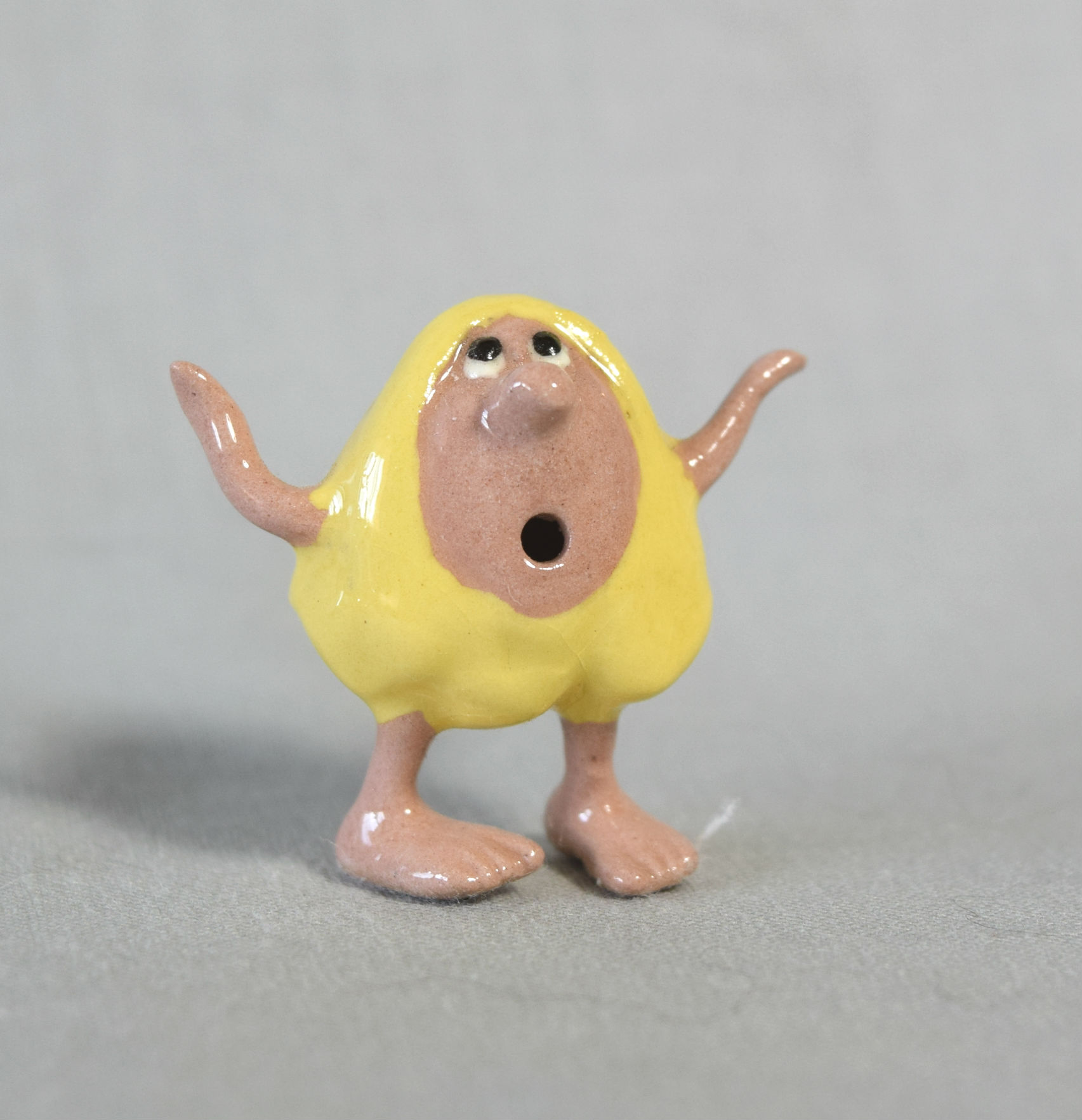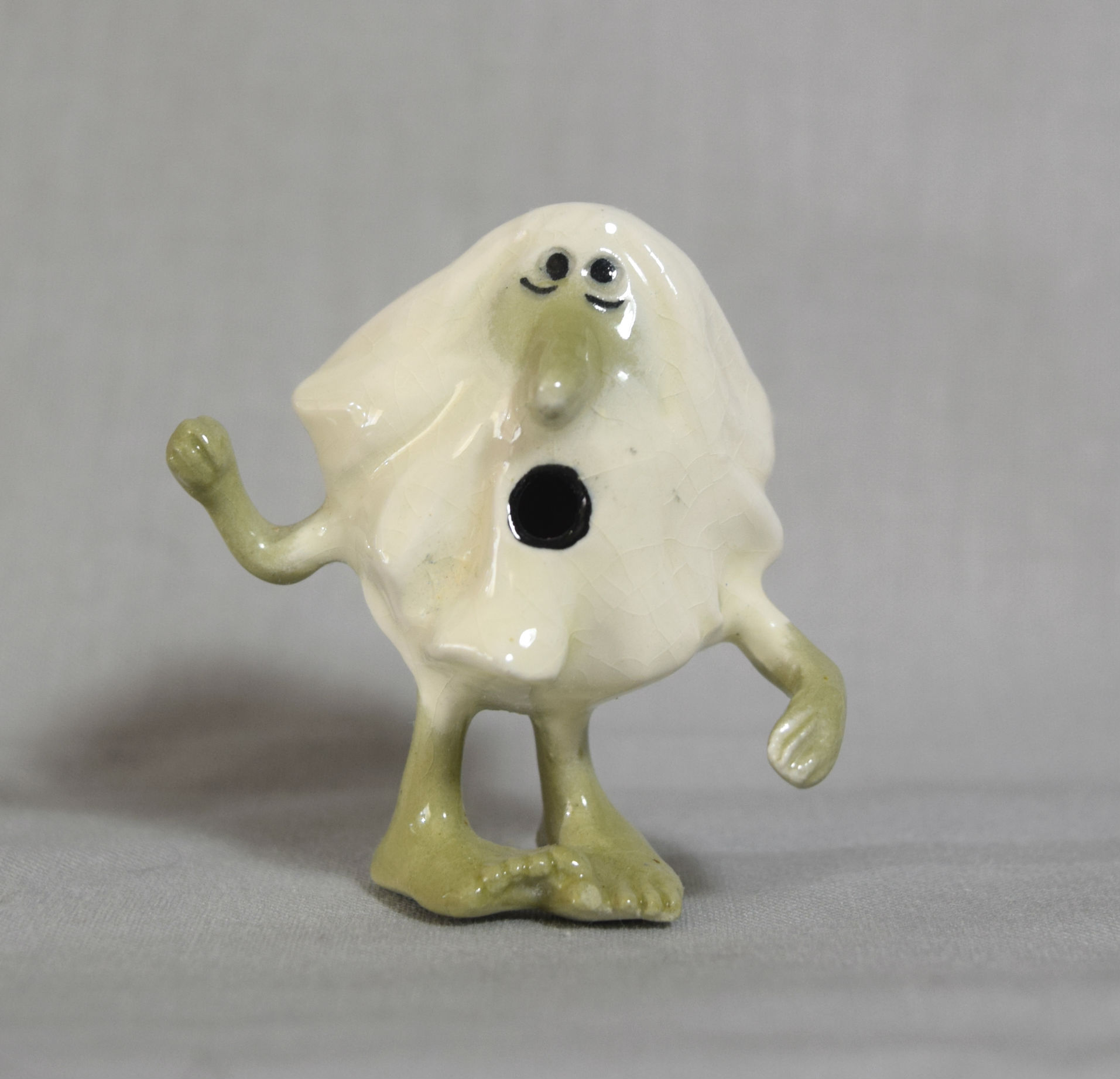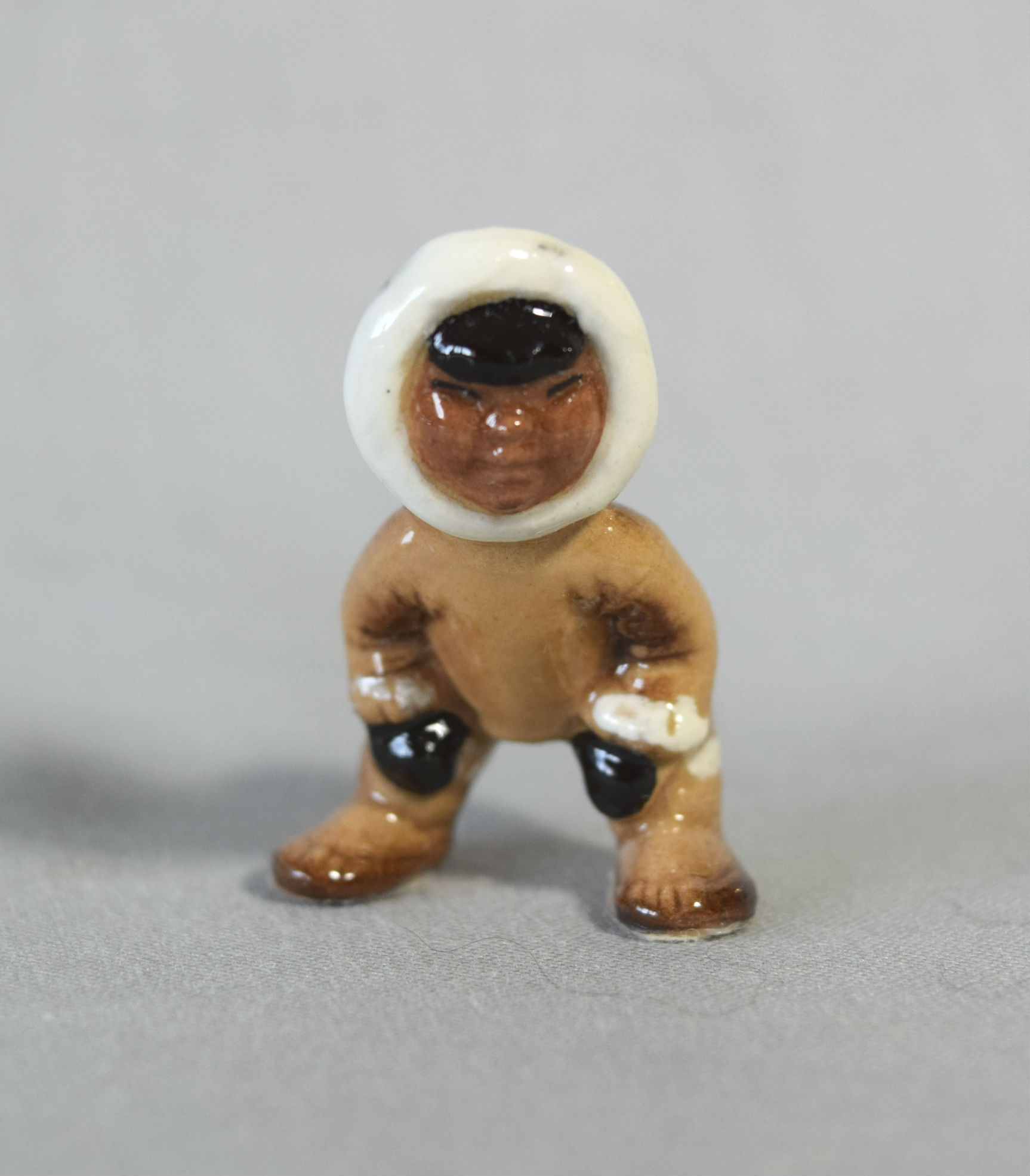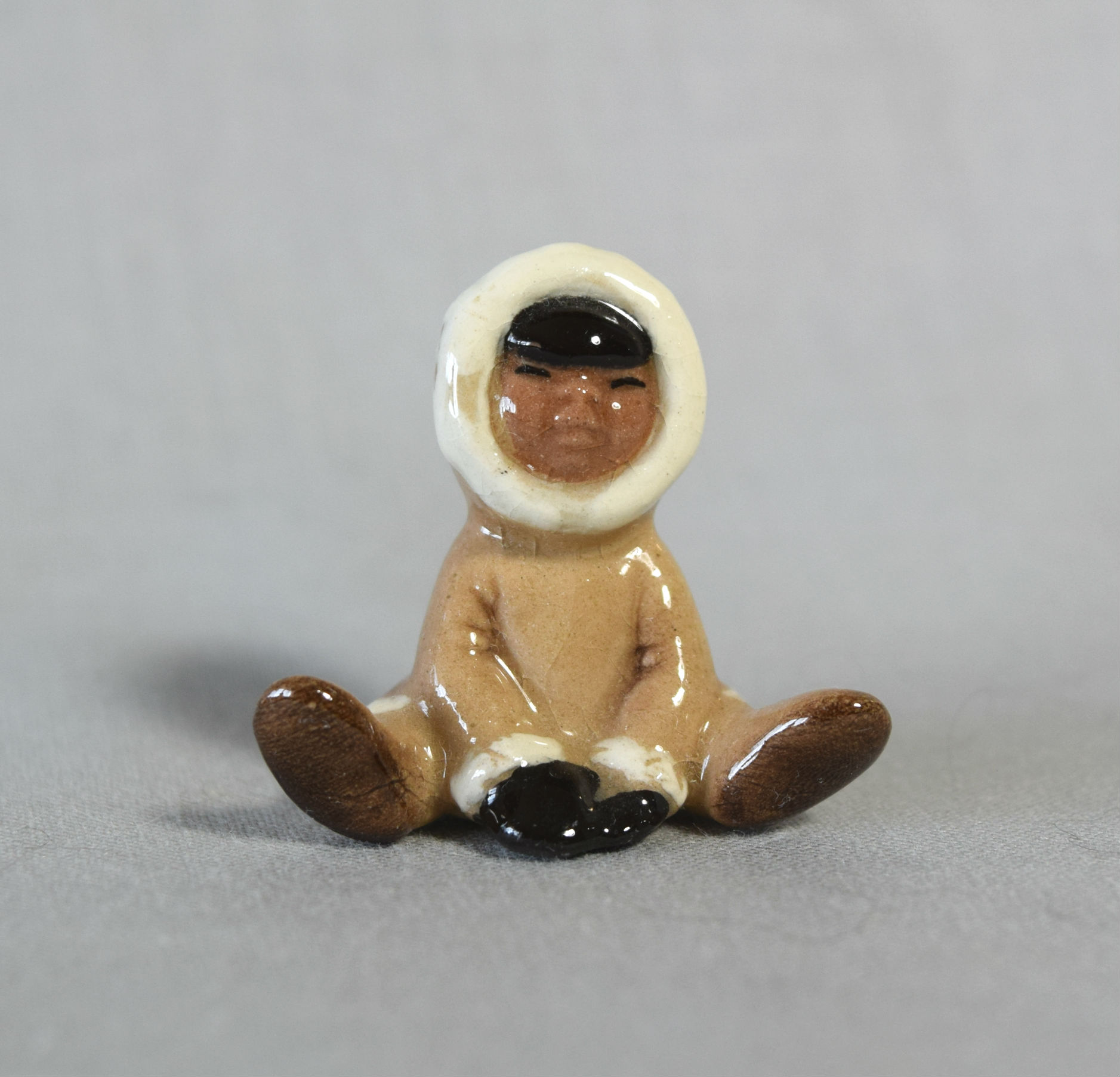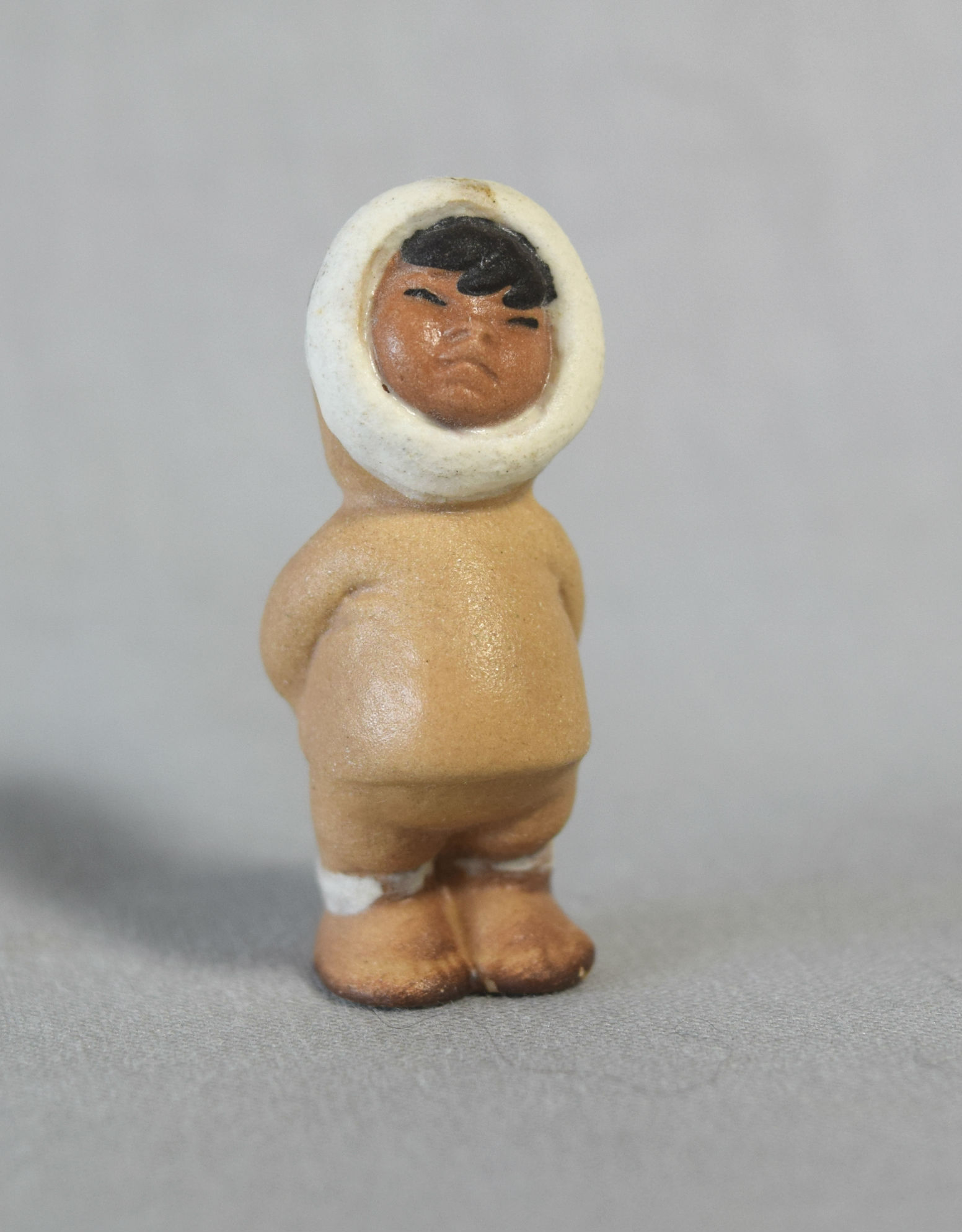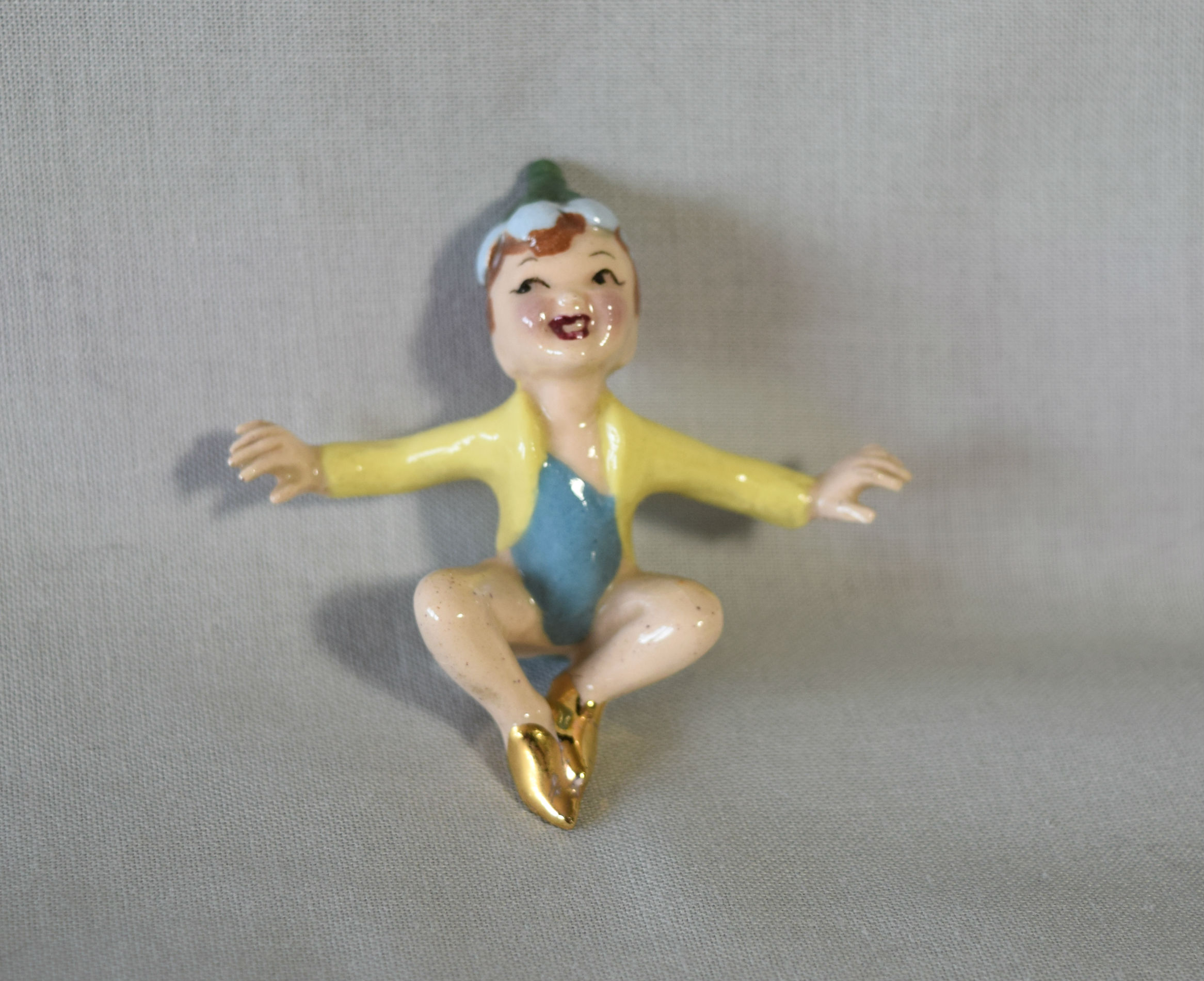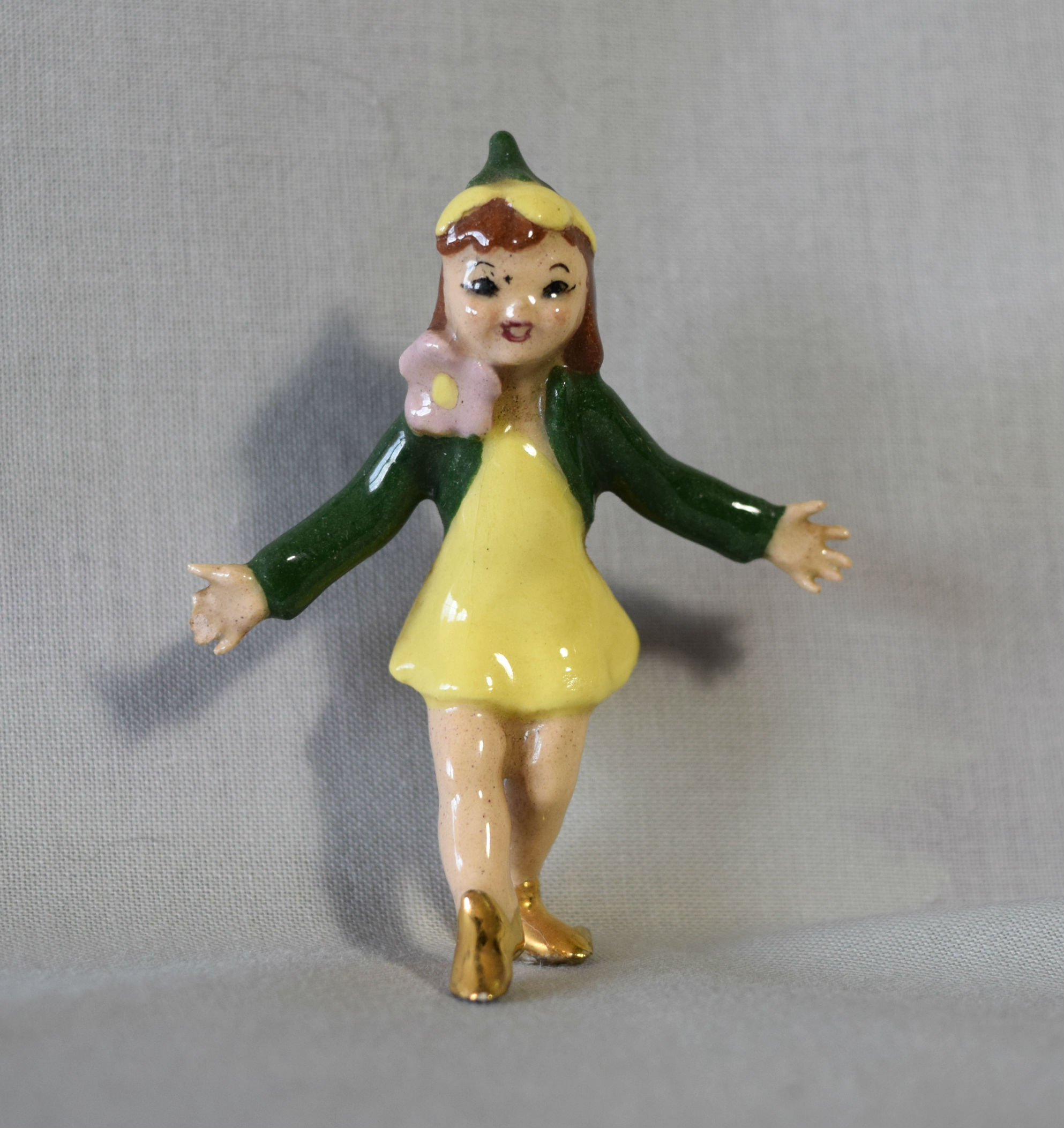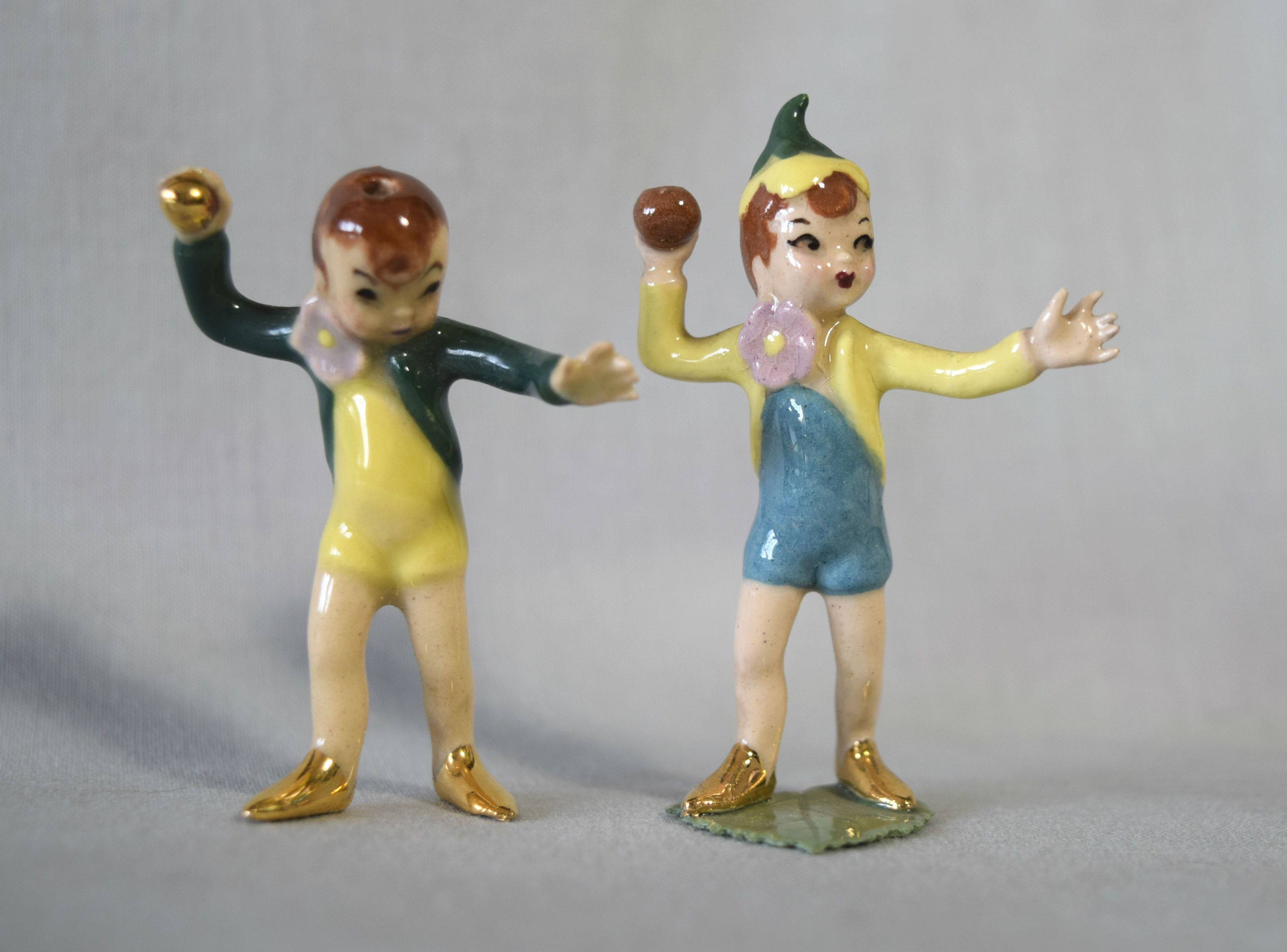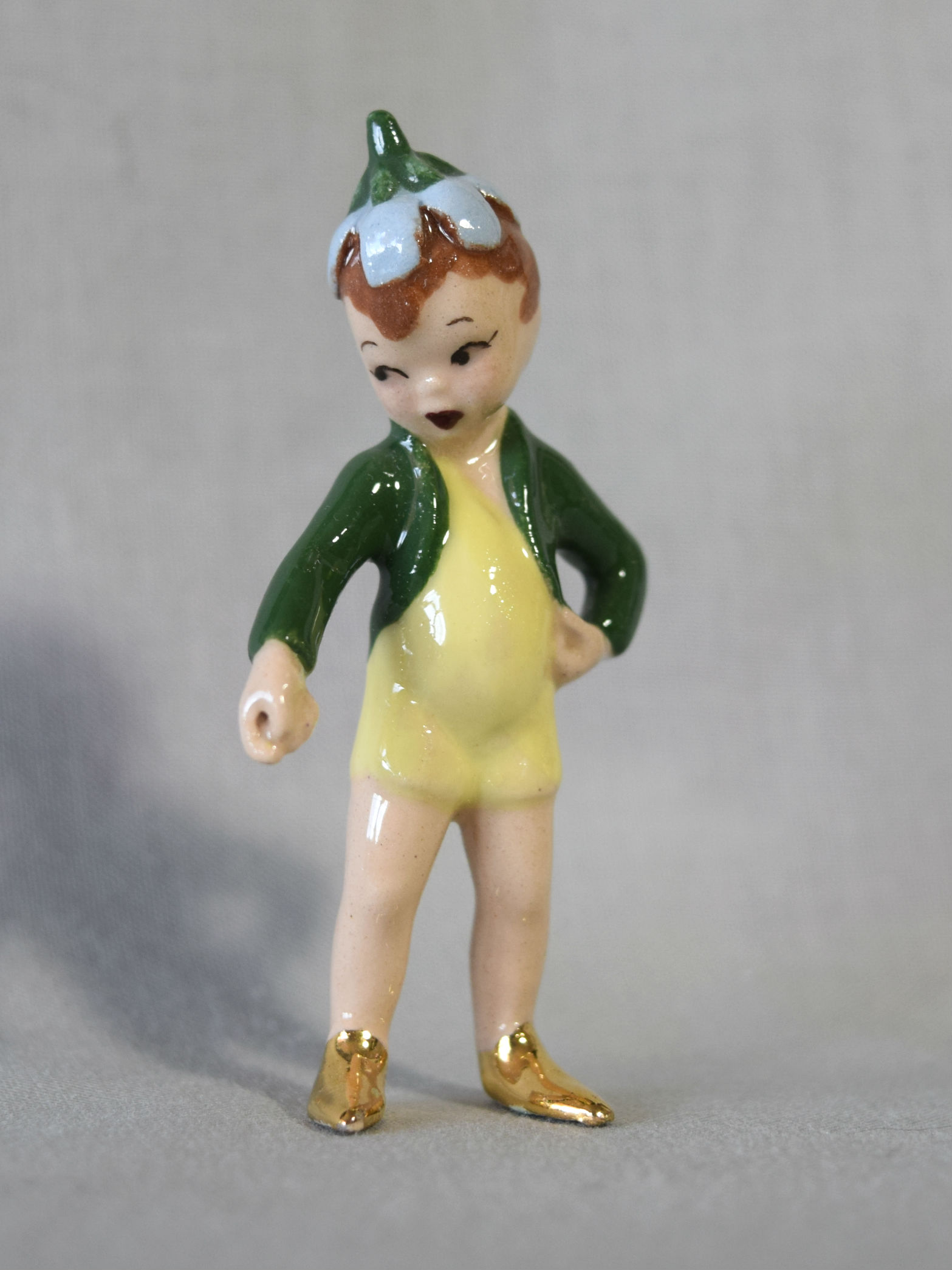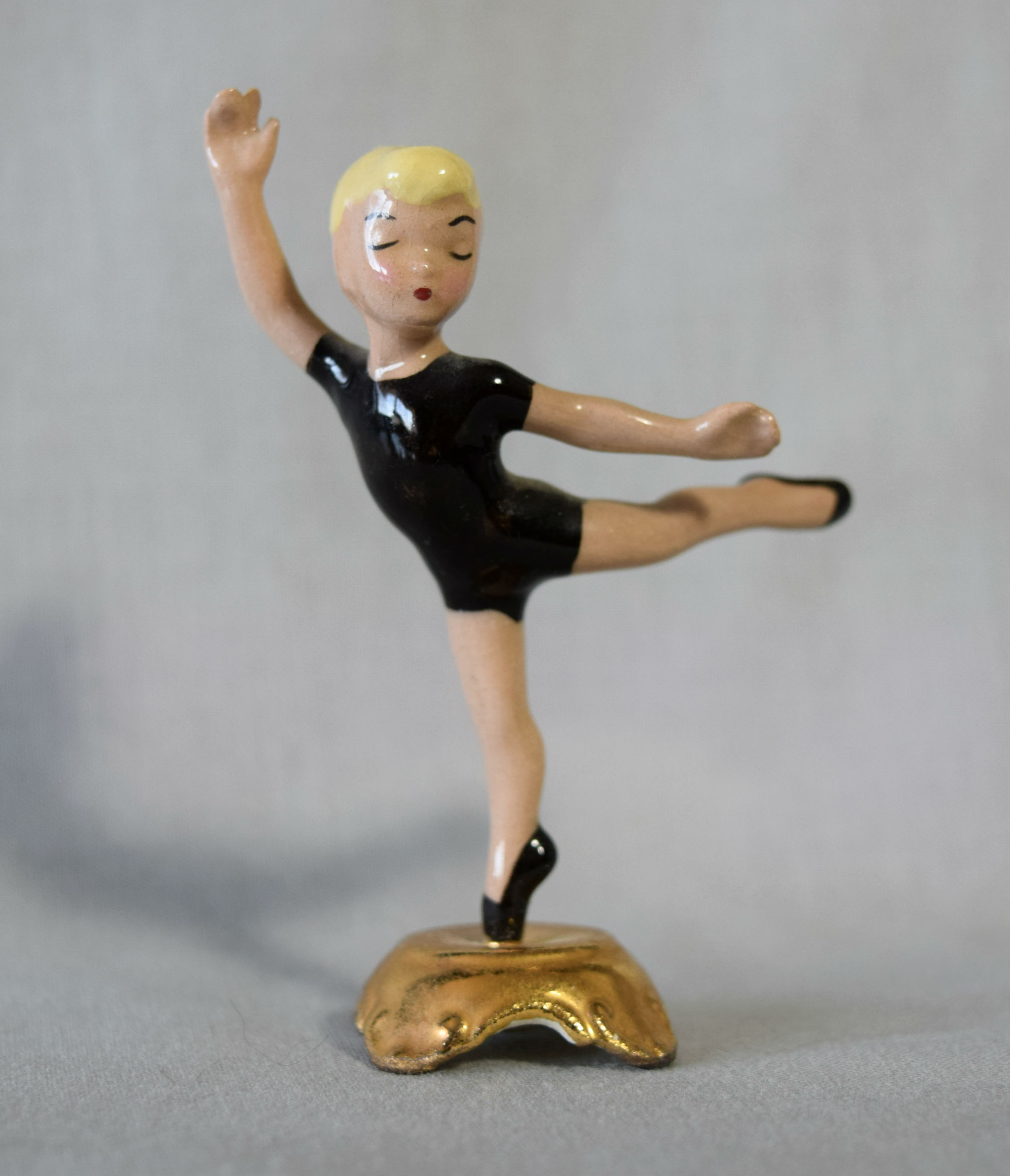

A-072, Caveman / Beach Boy, Junior, seated
Height: 1 1/8”
Designer: Nell Bortells
Production Dates:
F1966-F1967, as “Caveman sitting” (Green/white hair)
S1968, as “Sitting Caveman” (Green/white hair)
F1968, as “Junior Caveman” (Green/white hair)
S1969-S1973, as “Caveman Jr.” [colorway uncertain]
S1978-F1981, as “Caveman Junior (sitting)” (Brown/black hair, Brown/brown hair)
S1982-F1983, as “Beach Boy Jr., sitting” (Peach/blonde hair)
Mold Book Name: Sitting caveman
Notes: This piece was originally issued in 1958 in the Little Horribles line as D-419, Little Purple Man.
A-071, Caveman / Beach Boy, Junior, standing
Height: 1 ¼”
Designer: Nell Bortells
Production Dates:
F1966-F1967, as “Caveman standing” (Green/white hair)
S1968, as “Standing Caveman” (Green/white hair)
S1978-F1981, as “Caveman Junior (standing)” (Brown/black hair, Brown/brown hair)
S1982-F1983, as “Beach Boy Jr., standing” (Peach/blonde hair)
Mold Book Name: Standing Caveman
Notes: This piece was originally issued in 1958 in the Little Horribles line as D-390, Little Blue Man.
A-070, Caveman / Beach Boy, Senior
Height: 2”
Designer: Nell Bortells
Production Dates:
F1966-F1968, as “Senior Caveman” (Green/white hair)
S1969-S1973; S1978-F1981, as “Caveman” (Brown/black hair, Brown/brown hair)
S1982-F1983, as “Beach Boy Sr.” (Peach/blonde hair)
Mold Book Name: Senior Caveman
Notes: This piece was originally issued in 1958 in the Little Horribles line as D-383, Little Old Man.
A-944, Eskimo Tot, standing
Height: 1 ½”
Designer: Helen Perrin Farnlund
Production Dates:
S1980-S1985; F1990-F1991 (Gloss brown/tan, Matte brown/tan)
Mold Book Name: Eskimo Tot, standing
Notes: A-944 was later produced as part of Specialties 944, Polar Bear and Eskimo. This version has a pale face with pink cheeks and can sometimes be found separately.
A-114, Pixie for Butterfly
Height: 2 ¼”
Designer: Helen Perrin Farnlund
Production Dates: 1950-51 [?]
Mold Book Name: Pixie, butterfly
Notes: This piece does not sit alone. It is listed in the Mold Book right before A-115 Small Butterfly, and was clearly designed to sit on a butterfly, which it fits perfectly. The photos show one Pixie for Butterfly on A-99, Large Monarch Butterfly, and another on 3103 Specialties Monarch, which is a comparable size and shape.
The Pixie Leaf, A-131, was sculpted shortly after the Pixies, presumably to serve as an alternative seat or support for this piece. The green leaf shown here, and another in orange with brown edges, are the only known existing examples.
The Pixies are not listed on the order forms. All are rare. They may have been only test marketed (at Knott’s Berry Farm in Buena Park, California) around 1950-1951.
The Pixies are decorated very individually, with few alike. Known clothing colors are: pink tunic/blue jacket, yellow tunic/green jacket, blue tunic/yellow jacket. They have brown hair. The hats were molded separately and have blue or yellow petals. One Pixie with a bisque face is known; others are gloss. Another Pixie has wire antennae like a snail. Other variations probably exist.
Other pixies in the mold book are 117 Pixie girl, 118 Pixie leap, 120 Pixie girl nude, 121 Pixie girl curtsey, 122 Pixie nude kneeling, 123 Pixie girl prone [used on a Walker-Renaker piece], 124 Pixie girl sitting [used on a Specialties piece; others may have been used on Specialties pieces as well].
In 2000, several of the molds were reissued on bases as Specialties.
A-116, Pixie Girl, standing
Height: 2 ¼”
Designer: Helen Perrin Farnlund
Production Dates: 1950-51 [?]
Mold Book Name: Pixie girl, standing
Notes: The piece illustrated here is the only example of this mold that I have seen.
The Pixies are not listed on the order forms. All are rare. They may have been only test marketed (at Knott’s Berry Farm in Buena Park, California) around 1950-1951. Some are standing on a thin green ceramic leaf.
The Pixies are decorated very individually, with few alike. Known clothing colors are: pink tunic/blue jacket, yellow tunic/green jacket, blue tunic/yellow jacket. They have brown hair. The hats were molded separately and have blue or yellow petals. One Pixie with a bisque face is known; others are gloss. Another Pixie has wire antennae like a snail. Other variations probably exist.
Other pixies in the mold book are 117 Pixie girl, 118 Pixie leap, 120 Pixie girl nude, 121 Pixie girl curtsey, 122 Pixie nude kneeling, 123 Pixie girl prone [used on a Walker-Renaker piece], 124 Pixie girl sitting [used on a Specialties piece; others may have been used on Specialties pieces as well].
In 2000, several of the molds were reissued on bases as Specialties.
A-112, Pixie with Ball
Height: 2 ½”
Designer: Helen Perrin Farnlund
Production Dates: 1950-51 [?]
Mold Book Name: Pixie, throw
Notes: This pixie is holding a ball, which can be brown or metallic gold.
There are two mold versions for Pixie with Ball, 1. Head down, outstretched arm straight (probably the first version), 2. Head up, outstretched arm bent. The Version 1 Pixie shown here is missing his leaf hat.
The Pixies are not listed on the order forms. All are rare. They may have been only test marketed (at Knott’s Berry Farm in Buena Park, California) around 1950-1951. Some are standing on a thin green ceramic leaf.
The Pixies are decorated very individually, with few alike. Known clothing colors are: pink tunic/blue jacket, yellow tunic/green jacket, blue tunic/yellow jacket. They have brown hair. The hats were molded separately and have blue or yellow petals. One Pixie with a bisque face is known; others are gloss. Another Pixie has wire antennae like a snail. Other variations probably exist.
Other pixies in the mold book are 117 Pixie girl, 118 Pixie leap, 120 Pixie girl nude, 121 Pixie girl curtsey, 122 Pixie nude kneeling, 123 Pixie girl prone [used on a Walker-Renaker piece], 124 Pixie girl sitting [used on a Specialties piece; others may have been used on Specialties pieces as well].
In 2000, several of the molds were reissued on bases as Specialties.
A-111, Pixie with Stick
Height: 2 ¾”
Designer: Helen Perrin Farnlund
Production Dates: 1950-51 [?]
Mold Book Name: Pixie, stick
Notes: This piece has a hole in its hand for an object. What it was originally holding is unknown, but there is no mention of a stick or wand in the Mold Book. It may have been an actual wooden stick. A ceramic wand was created for this pixie when it was later reissued in the Specialties line.
The Pixies are not listed on the order forms. All are rare. They may have been only test marketed (at Knott’s Berry Farm in Buena Park, California) around 1950-1951. Some are standing on a thin green ceramic leaf.
The Pixies are decorated very individually, with few alike. Known clothing colors are: pink tunic/blue jacket, yellow tunic/green jacket, blue tunic/yellow jacket. They have brown hair. The hats were molded separately and have blue or yellow petals. One Pixie with a bisque face is known; others are gloss. Another Pixie has wire antennae like a snail. Other variations probably exist.
Other pixies in the mold book are 117 Pixie girl, 118 Pixie leap, 120 Pixie girl nude, 121 Pixie girl curtsey, 122 Pixie nude kneeling, 123 Pixie girl prone [used on a Walker-Renaker piece], 124 Pixie girl sitting [used on a Specialties piece; others may have been used on Specialties pieces as well].
In 2000, several of the molds were reissued on bases as Specialties.

